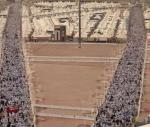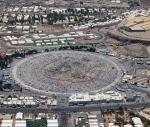You are here
Unemployment and growth
Jun 23,2014 - Last updated at Jun 23,2014
In the study of economics and in practice everywhere, it is typically assumed that when the economy grows, the rate of joblessness (unemployment) falls.
This is not the case in Jordan.
A completely anomalous behaviour has been observed during some periods of Jordan’s recent past: when the growth was high, unemployment was also high; and at times of extremely low growth rates, almost recessionary times, unemployment was at record low rates.
I believe that the solution is simple and has many significant policy implications.
In Jordan it is difficult to interpret data that compares real economic growth to unemployment.
High real growth rates mean greater actual production, which also means that businesses would hire more people, thus causing unemployment rates to fall. The reverse is true.
However, empirical findings tell a completely different story, actually the opposite of this common sense observation.
During 2004-2008, the Jordanian economy grew at an average annual rate of 8 per cent, an enviable number worldwide and definitely the highest in the region.
The unemployment rate for the same period averaged 13.4 per cent annually.
Consider, by comparison, what happened during the bad years, 2010-2013: the growth rate was 2.6 per cent (barely surpassing the population growth rate) and the unemployment rate was lower than that of the golden era, 12.5 per cent, which means that more Jordanians were working during the bad years than during the good years.
There is an explanation, after all.
Jordan typically attracts investment after some turmoil in the region.
As investors escape a tumultuous region and seek safe havens for their funds, they find themselves attracted to Jordan, an oasis of safety and stability.
Given that these investors are averse to risk, and because the productive basis is narrow and undiversified in Jordan, the majority of foreign investment usually goes into the real estate sector, which in turn affects some 32 other sub-sectors, spearheading the growth of the economy.
And as expected, investments flow out of other sectors within Jordan and go into the real estate market to partake in the benefits of growth.
Herein rests the answer: 75 per cent of the labour force in the real estate sector is foreign. It is a sector in which growth leads to greater job creation for the guest labour force, but not for Jordanians.
As investments leave other sectors, which tend to create more jobs for Jordanians, to go into real estate, Jordanian workers see a decline in job opportunities in sectors where they are typically employed.
The economy, however, grows fast with the growth in real estate, which means that foreigners find work, and Jordanians do not.
This is why when times are good, Jordanians do not work but foreigners do, and when times are bad, investments leave the real estate market for other sectors, where Jordanians are typically employed.
The above means that when FDI was rising to amazingly high rates, investments went into real estate and little else, even pulling away investments from other sectors, such as manufacturing.
More attention should be paid to where the foreign and domestic investment goes.
Jordan should encourage other types of investment if it wishes to lower the unemployment rate, and avoid capital and job flight, any time regional investors decide to visit.













